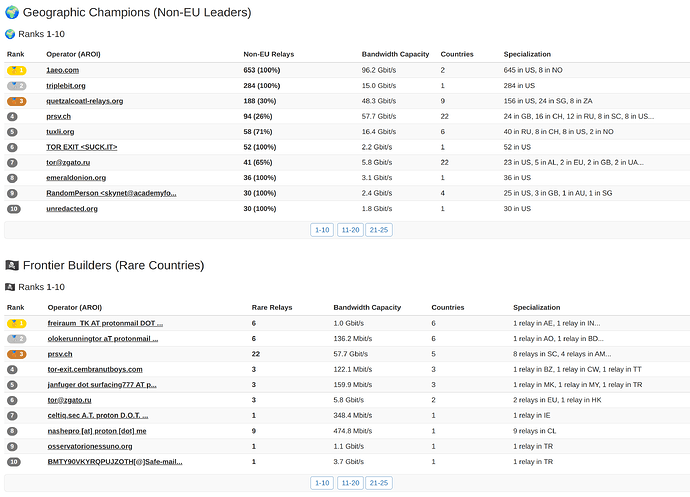Yes, it is incredible, but data ends at 2015. At the bottom of the display there is a timeline.
Not sure how it would appear today, but it might be quite similar.
It’d be great to see it updated. The source code is available on GitHub for anybody interested in updating it.
Yes, most traffic goes through US East Coast because a much faster route back to Europe, where the majority of Tor relays traffic is supported.
Last 6 months I’ve ran 10G servers across US. The east coast, specifically NY/NJ, is the only region I can get ~5 Gbps, half the available bandwidth, to be utilized by Tor, and that’s with ~256 threads and ~200 relays for the ~5 Gbps.
US South, US West and US Mid-West all struggled to reach above 2 Gbps on 10 Gbps dedicated bandwidth servers.
FWIW, I see similar utilization out of Canada East, i.e. Montreal, that very closely matches NY/NJ, around 4-5 Gbps.
There are definitely not enough relays in Asia (or LATAM as you mentioned too).
It’s unlikely that simply adding more relays resolves the lack of bandwidth allocation to anywhere non EU because there are significant relays and bandwidth capacity outside EU today except Tor does not priority sufficient traffic there.
I made a few leaderboard categories, updated every 30 min, to track relay operators outside of the EU in an attempt to encourage more:
![]()

